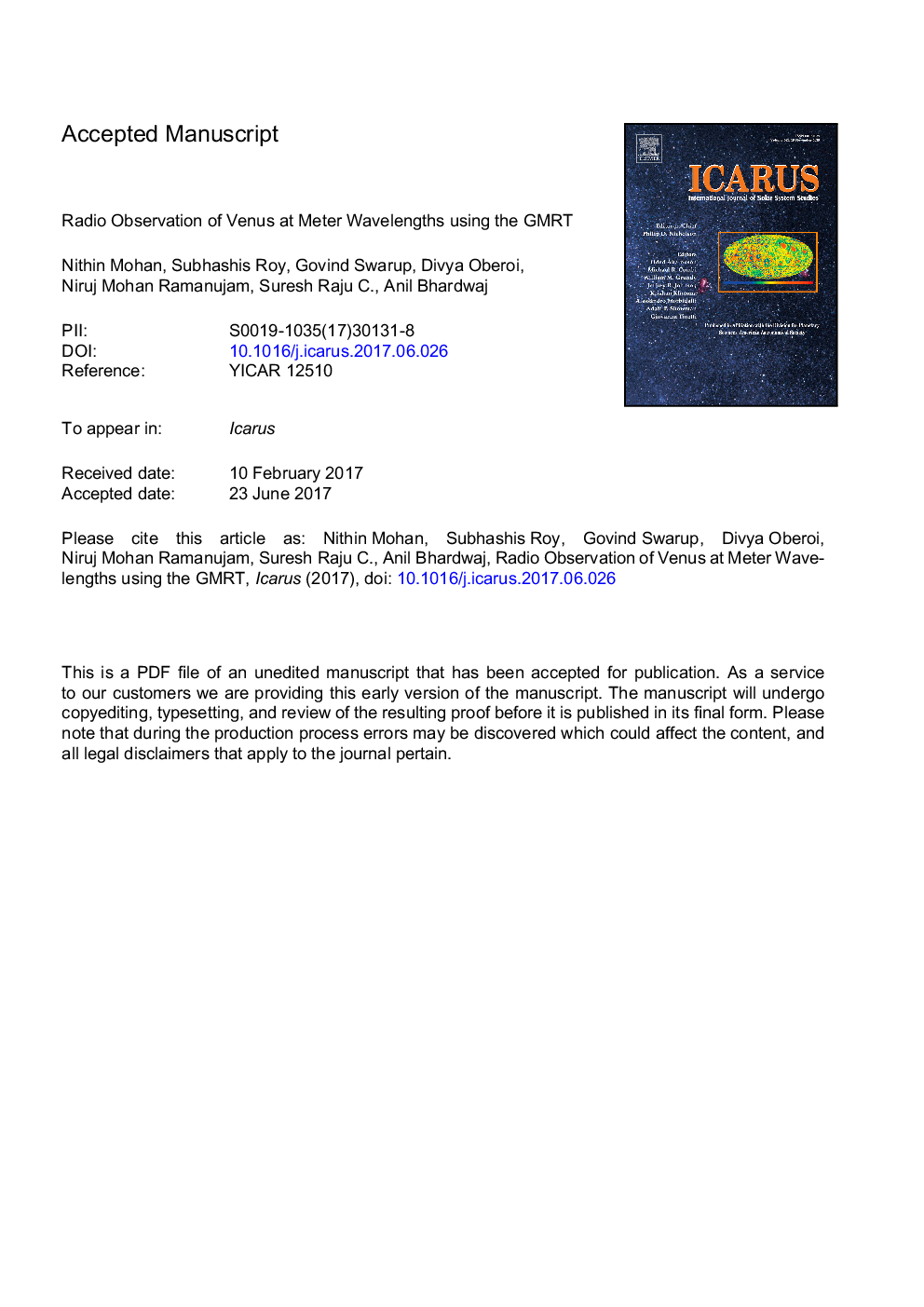| Article ID | Journal | Published Year | Pages | File Type |
|---|---|---|---|---|
| 5487172 | Icarus | 2017 | 18 Pages |
Abstract
The Venusian surface has been studied by measuring radar reflections and thermal radio emission over a wide spectral region of several centimeters to meter wavelengths from the Earth-based as well as orbiter platforms. The radiometric observations, in the decimeter (dcm) wavelength regime showed a decreasing trend in the observed brightness temperature (Tb) with increasing wavelength. The thermal emission models available at present have not been able to explain the radiometric observations at longer wavelength (dcm) to a satisfactory level. This paper reports the first interferometric imaging observations of Venus below 620Â MHz. They were carried out at 606, 332.9 and 239.9Â MHz using the Giant Meterwave Radio Telescope (GMRT). The Tb values derived at the respective frequencies are 526Â K, 409Â K and <426Â K, with errors of â¼7% which are generally consistent with the reported Tb values at 608Â MHz and 430Â MHz by previous investigators, but are much lower than those derived from high-frequency observations at 1.38-22.46Â GHz using the VLA.
Related Topics
Physical Sciences and Engineering
Earth and Planetary Sciences
Space and Planetary Science
Authors
Nithin Mohan, Subhashis Roy, Govind Swarup, Divya Oberoi, Niruj Mohan Ramanujam, Suresh Raju C., Anil Bhardwaj,
